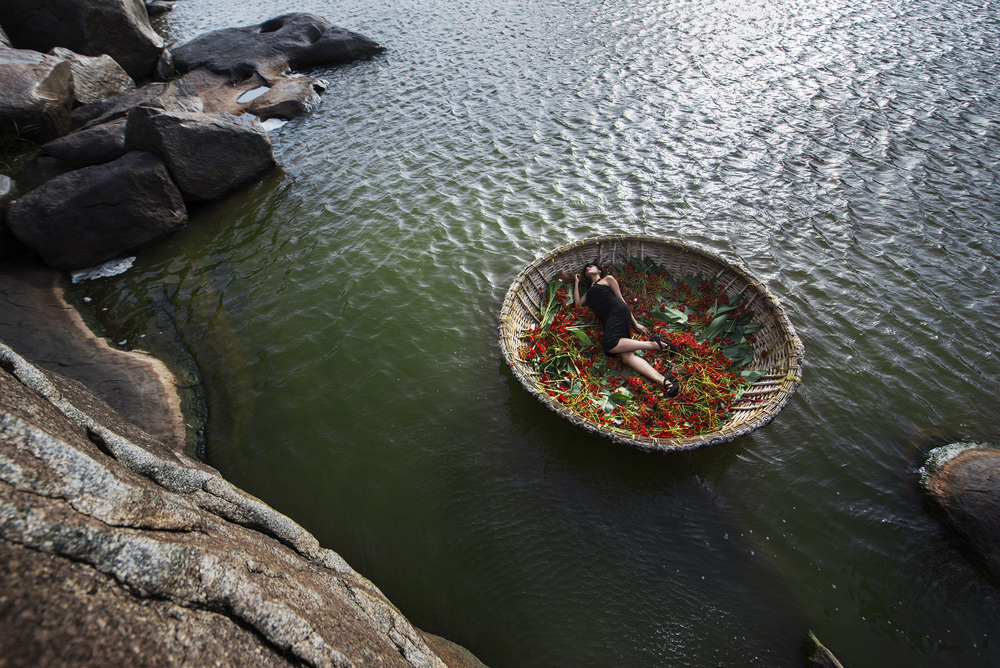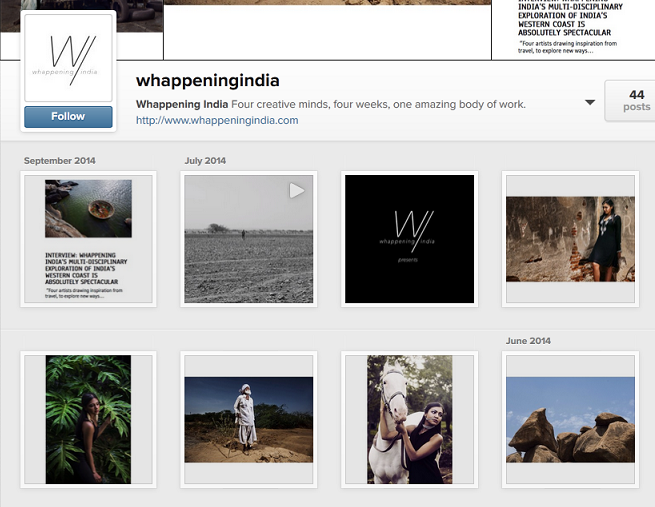‘Hampi is more than just Temples and Ruins’
I like to turn things upside down, to watch pictures and situations from another perspective.- Ursus Wehrli
Think of The Rann of Kutch as a fashion runway or imagine glimpses of Hampi in a behind-the-scenes fashion documentary. A little different from the norm? Exactly what Whappening India’s four gifted artists – Trupal Pandya, Helen Stimson, Zia Sen and Akanksha Sonthalia – had in mind when they embarked on a creative journey along the Western Coast of India, in “search of self-discovery and individual inspiration,” and gave these wonderful locations a rare perspective. Akanksha Sonthalia, one of the four creative heads at Whappening India, shared her experiences with us:
What is your opinion on the effects of creative projects such as Whappening on heritage tourism? What do you should be a takeaway for people from this creative extravaganza?
What I find so fascinating about Whappening is that it was so easy to bring different talents together to promote a place through a different perspective. Be it in the field of photography, fashion, art or culture, the project scrapes through the facade of a location but digs further and exhibits the culture in real time through raw documentaries and expressive photographs. I feel that people in creative fields should connect and collaborate and try new mediums to express themselves. This in turn will give them wings to extend their creativity to uplift and recreate the arts or in this case the local culture and place.
You travelled to Vadodara, Rann of Kutch, Kalo Dungar, Mandvi, Goa, Bangalore, Anegundi and Hampi. Why did you choose these locations specifically?
I was contacted by Trupal and Zia with the idea of Whappening as part of a summer project at the Fashion Institute of Technology in New York. I was initially supposed to document the western coast, namely Gujarat and Goa. I took an instant liking for the concept. Prior to this, I had been working in Hampi as an architect for a while and suggested that Hampi’s beautiful landscape and culture had to be showcased through this project. In order to accomplish that, we worked with Shama Pawar, founder of The Kishkinda Trust, an NGO that promotes sustainable tourism in Anegundi. She is my guide and mentor as well.
All three places, be it Rann of Kutch, Goa or Hampi, have deep rooted cultures and stark landscapes. Hence, this soft spot for all of them.
Hampi is a UNESCO world heritage site, while the other locations are known for other aspects. Is there a connecting thread among all these locations?
We wanted to shoot outdoors largely, in order to get the best of natural light and landscapes. The intention was to combine fashion in a dramatic way with stark backgrounds that reflected the culture of the place.
So, we covered the desert of the Rann of Kutch, which provided an interesting lighting – enmeshing a bright glare to the white and brown solid backgrounds. The wind added the much-needed drama. We went on to Goa, which was just settling into the monsoons. The pictures came out more grey and tropical, and Hampi lent all the drama with its landscape of caves, rivers, boulders and ruins.
Looking back, all the three places made a perfect concoction of different elements and landscapes.
Your shoot in Hampi focused on the rocks and the river, why did you choose to focus on these specific aspects of Hampi?
Hampi, for the longest time, has been connected with temples and ruins. But this exquisite place has so much more to it than just that. I think the natural landscape is spectacular and its presence has been underexplored and undermined. There is so much history and drama to the boulders that look straight out of the Flintsones. The graceful Tungabhadra gently flowing through the rocks, the caves and ruins intermixed with the beautiful sunset and paddy, capture all the richness and abundance of the heritage site.
What was your experience as a traveler, capturing Anegundi and Hampi in this creative collaborative project?
The first time I went to Hampi, I was overwhelmed to see such beauty and balance in nature. The Anegundi side of the river is older than the ruins on the Vijayanagara side. According to Hindu mythology, this is where Hanuman was born. It also resides cave paintings that date back to the 3rd century. There are small mysterious pathways that hideaway ruins or water pools. It’s all so peaceful yet exciting. It opens the mind to possibilities and the beauty around us.
I explored the landscape as a model and designer. We had to perform in different settings which proved very exciting for all of us. The shot of me in the coracle with the gulmohar was quite interesting. We shot early in the morning with Trupal shooting aerially from a boulder. All the shots were offbeat and experimental. We couldn’t get optimal light, so Trupal had to jump from one boulder to another while the boatman very aptly would snake the boat around using a long rope, to keep me from drifting away.

What aspect of Hampi has left the biggest impact on you? Why?
Hampi, to me, is very spiritual and has a balancing effect on my soul. It makes you want to find a sustainable way of living and for preserving the art and culture of a place that found its way into the World Heritage list. After doing my thesis on Hampi and researching for the past two years, I have realized that this heritage site needs to realize its full potential. From being a city of ruins, it needs to become a living city which celebrates its rich heritage and culture.
Planning a visit to Hampi? Get ready with our travel friendly tshirts, get one for yourself – here!


